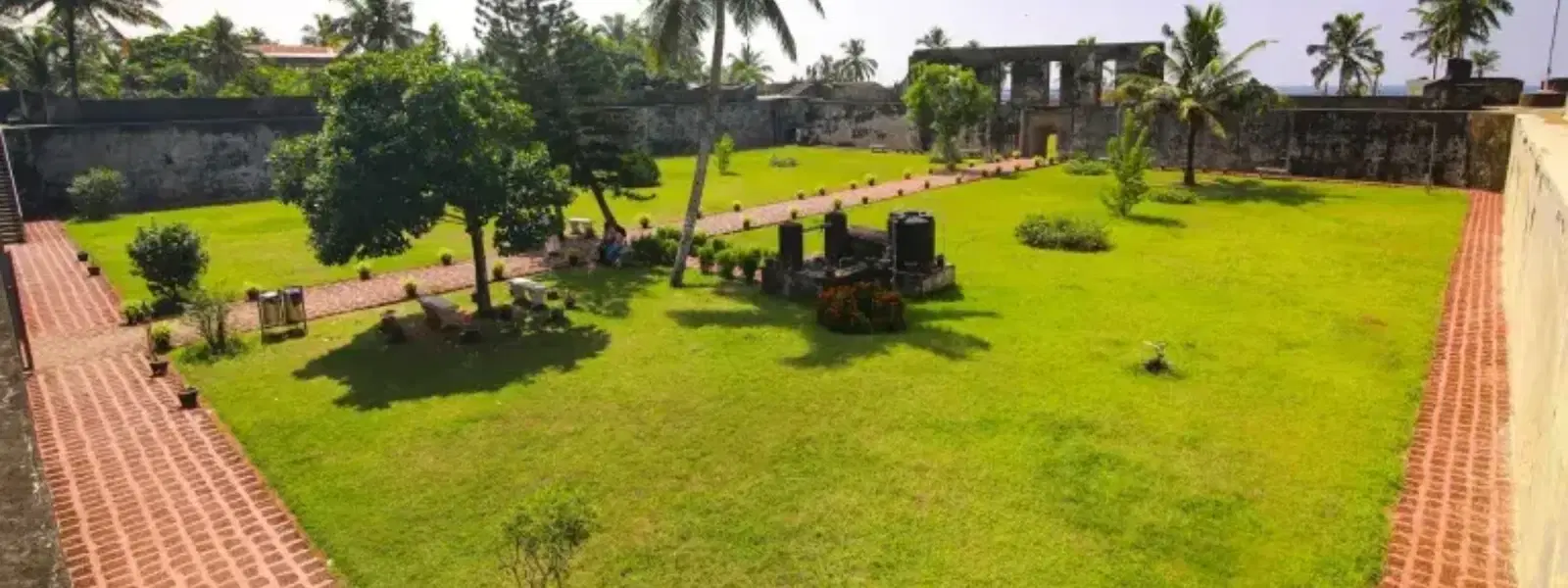
Hotels
•04 min read

Kerala's historical forts have long captivated wanderers with their rich tales, and none stands out quite like Palakkad Fort. Nestled in the heart of Kerala, this fort is intrinsically linked to Tipu Sultan's military genius and the region's storied heritage. In this post, we explore seven fascinating facts that uncover the fort's unique architecture, its cultural importance, and how it played a pivotal role during Tipu Sultan's reign.
Palakkad Fort was originally constructed by Hyder Ali in the 18th century. Built as a strategic military stronghold in the Mysore province, its very walls echo the footsteps of history. Later, Tipu Sultan enhanced the fort's defenses, underscoring its importance during his campaigns in Kerala. His involvement not only fortified the structure but also ensured that the fort would be remembered as a symbol of strategic brilliance.
The location of Palakkad Fort was chosen for its tactical advantage. It served as a military base to counter threats from the Zamorin of Kozhikode and later, challenges posed by British colonial forces. This fortress was a critical element in Tipu Sultan's military strategy, as it helped secure key trade routes and boosted his broader influence in Kerala.
Tipu Sultan's touch can be felt in every stone of Palakkad Fort. He recognized the fort’s potential as a bulwark to expand Mysore's influence in Kerala. Through various enhancements and tactical deployments, the fort became an indispensable part of his military campaigns, symbolizing his quest for regional dominance and his forward-thinking approach to defense.
The design of Palakkad Fort is a testament to Tipu Sultan's strategic insight. Its robust stone structure, ingenious layout, and well-planned defensive features reflect a deep understanding of warfare. The fort's location allowed for efficient monitoring of surrounding areas, making it an ideal stronghold during key battles against the British and other adversaries.
One cannot help but admire the architectural brilliance of Palakkad Fort. Constructed from durable stone, the fort boasts a formidable moat and a series of sturdy bastions that have withstood the test of time. When compared to other historical forts in Kerala, Palakkad Fort stands out for its blend of functionality and beauty, showcasing design elements that were both innovative and practical for its era.
The Archaeological Survey of India has played a vital role in preserving this historical monument. Their dedicated efforts ensure that the fort remains a living testament to Tipu Sultan’s legacy and Kerala's cultural history. Continuous restoration work has helped maintain its historical integrity while opening doors to new generations eager to explore India's past.

Today, Palakkad Fort is far more than just a relic of the past. It has earned its reputation as a cultural landmark and is a must-visit site for those exploring Kerala's heritage. Its historical significance is celebrated in regional tourism, drawing enthusiasts who are keen on experiencing the physical remnants of a vibrant past.
The fort also serves as a venue for a variety of cultural events and exhibitions. From heritage walks to art installations and local festivals, the area around Palakkad Fort buzzes with life, merging historical grandeur with modern-day cultural expressions. Its appeal is universal, attracting history buffs, local families, and even the luxury seeker who appreciates refined cultural heritage.
Palakkad Fort was built at a unique crossroads, making it a crucial point for controlling trade routes. Its position was key to defending Mysore's territory, and it enabled the fort to serve as a robust barrier against invading forces.
Tipu Sultan's direct involvement in reinforcing and fortifying Palakkad Fort solidified its status as a military marvel. His contributions not only enhanced its defensive capabilities but also imbued it with an enduring legacy that is still celebrated today.
The fort was central to several important military engagements, particularly in conflicts against the British. Its robust structure and strategic location made it an indispensable asset during intense battles.
Palakkad Fort is renowned for its impressive moat, towering bastions, and meticulously planned layout. These architectural features not only provided robust defense mechanisms but also showcase the foresight of Tipu Sultan's military strategy.
Despite the passage of centuries, Palakkad Fort remains a vibrant symbol of Kerala's rich history. Its cultural significance has only grown over time, attracting tourists who wish to immerse themselves in the historical narratives of the region.

Ongoing restoration efforts by the Archaeological Survey of India have played a pivotal role in preserving this cultural gem. Their dedication ensures that visitors can continue to appreciate the fort’s historical grandeur.
Today, the fort not only stands as a reminder of Tipu Sultan’s reign but also as an inspiration to many. It continues to spark interest among historians, travelers, and locals alike, keeping the rich legacy of Kerala’s past alive.
Did you know? Tipu Sultan envisioned Palakkad Fort not just as a military base but as a gateway to expand Mysore’s influence in Kerala, making it a cornerstone of his strategic campaigns.
The fort was built by Hyder Ali in the 18th century and later fortified by Tipu Sultan as a key military base during Mysore’s campaigns in Kerala.
Palakkad Fort is famed for its strategic location, unique architectural design, and its pivotal role in Tipu Sultan’s military campaigns. It stands today as a preserved heritage site.
While Tipu Sultan significantly fortified Palakkad Fort with his military innovations, it was originally constructed by his father, Hyder Ali.
Palakkad is a region steeped in history, where the fort played a crucial role in safeguarding Mysore’s territory and trade routes, contributing richly to Kerala’s cultural mosaic.
Palakkad Fort is a monument that embodies the military acumen of Tipu Sultan and the vibrant history of Kerala. Its strategic construction, architectural grandeur, and ongoing restoration efforts serve as a testament to its enduring legacy. Exploring this fort allows us to connect with a past that continues to inform and inspire modern cultural and historical narratives, ensuring that our rich heritage remains alive for future generations.